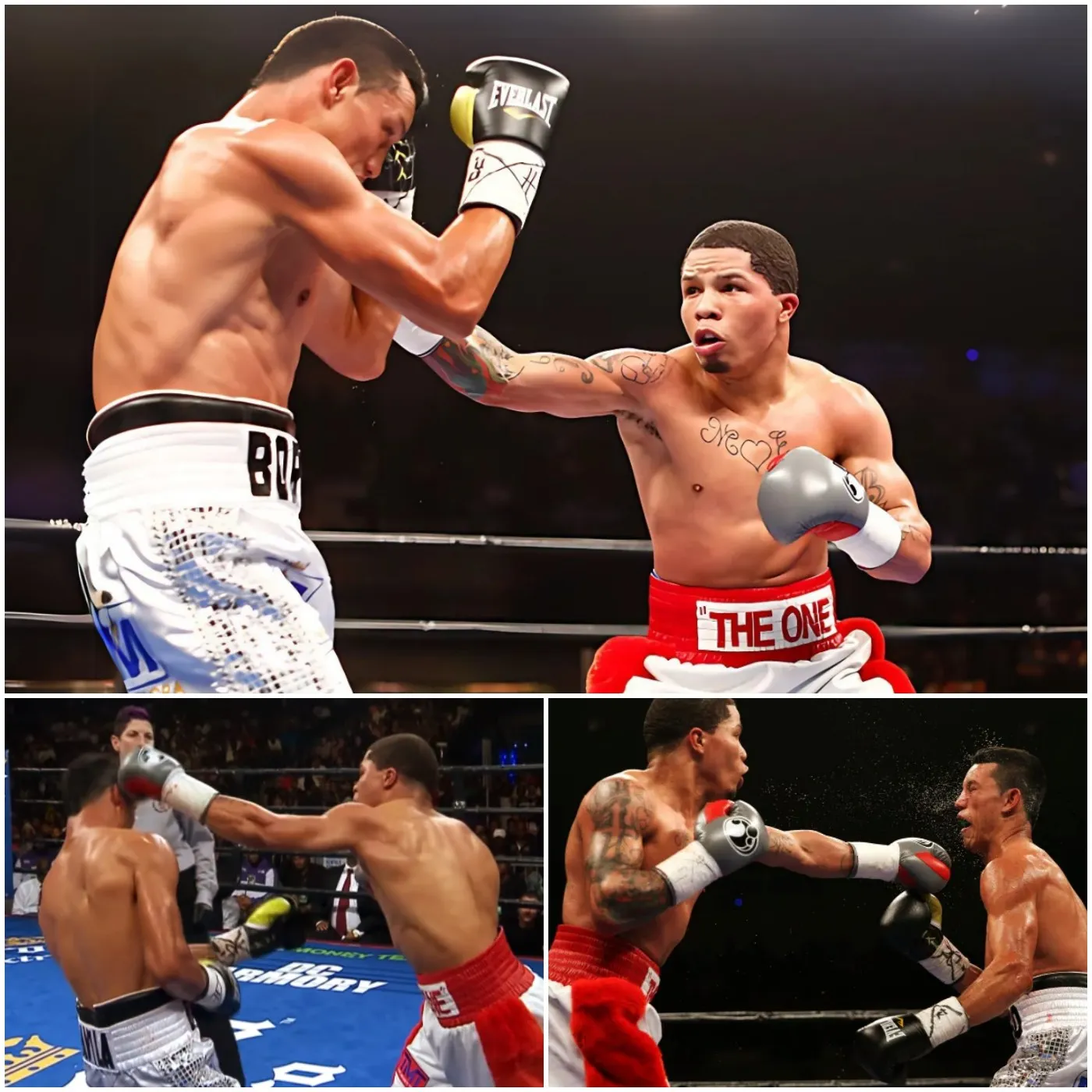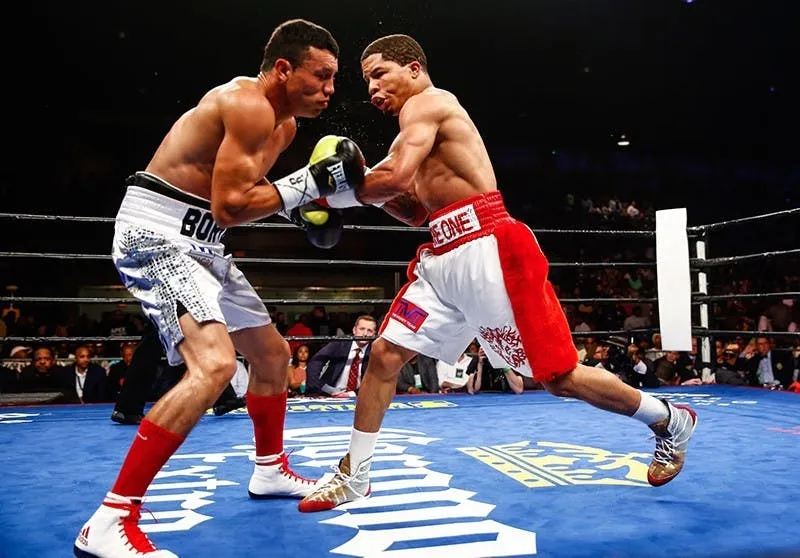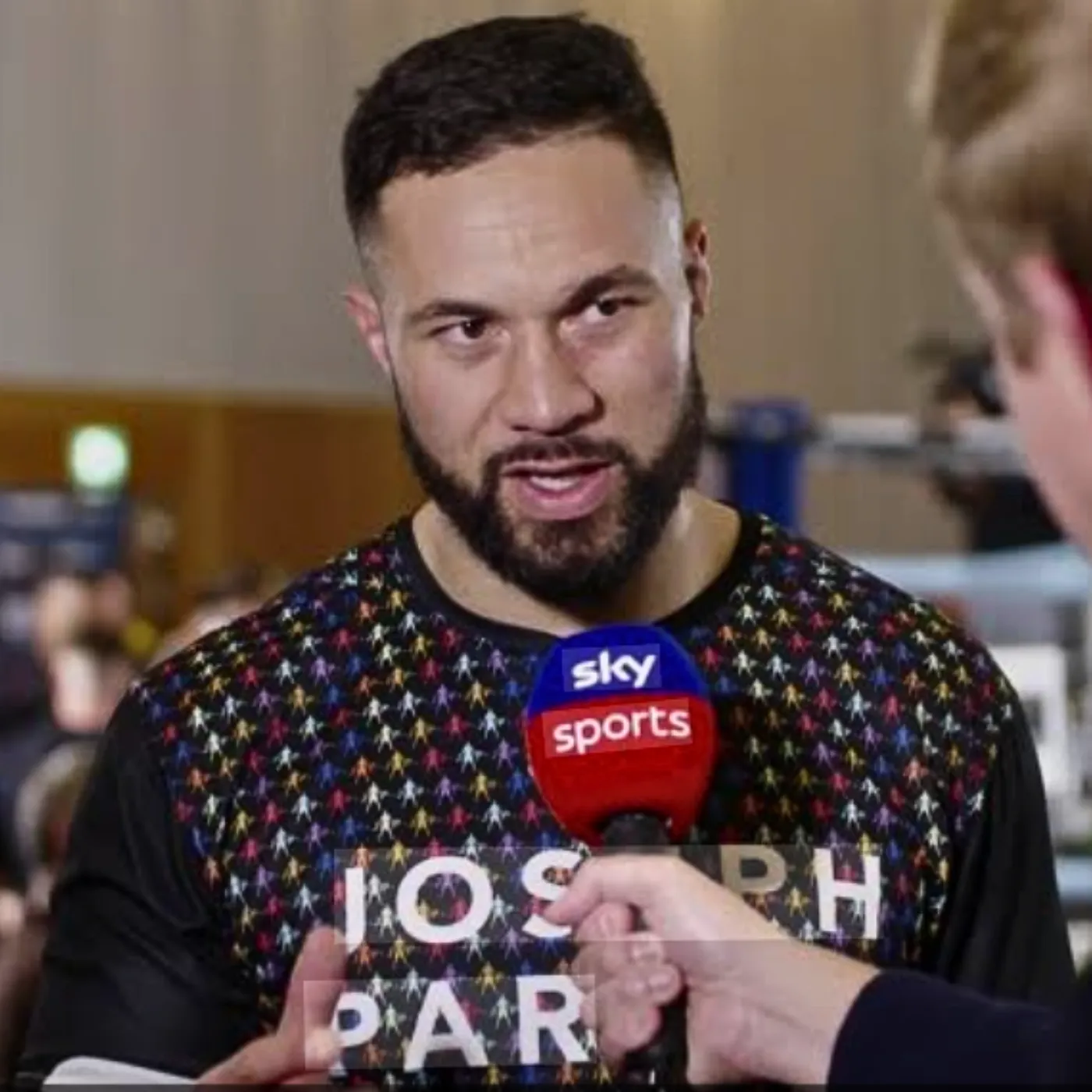

The classy “Fake attack” tactics of Gervonta ‘Tank’ Davis vs. Guillermo Avila Godnez
Gervonta “Tank” Davis, one of boxing’s most promising stars, showcased his exceptional skills and tactical intelligence in his fight against Guillermo Avila Godnez. This match was not just another victory for Davis but a masterclass in the art of deception. By employing the “fake attack” strategy, he successfully outmaneuvered his opponent, creating opportunities to land devastating punches and ultimately securing a knockout win.
Fight Overview
On April 1, 2016, at the D.C. Armory in Washington, D.C., Gervonta Davis squared off against Guillermo Avila Godnez in a highly anticipated bout. At the time, Davis had built an impressive record of 15 wins, with 14 coming by knockout, solidifying his status as a rising boxing sensation. On the other hand, Avila, a tough and experienced Mexican fighter with a 16-5 record (including 13 knockouts), was determined to challenge the young prodigy.
From the outset, the fight was expected to be a clash of styles—Davis’ explosive power and speed versus Avila’s resilience and counterpunching ability. However, it was Davis’ strategic use of “fake attacks” that made the difference and led to a spectacular victory.
What is the “Fake Attack” strategy?
In boxing, a “fake attack” refers to a technique where a fighter pretends to throw a punch or initiate an attack to provoke a reaction from their opponent. This method is used to force an opponent into making a mistake, exposing vulnerabilities that can be exploited for real offensive moves.
Throughout the fight, Davis repeatedly executed this strategy with remarkable precision. By feinting attacks, he manipulated Avila’s defensive responses, making him commit to unnecessary movements. This allowed Davis to dictate the pace of the fight and land clean, effective shots with minimal risk.
Key Elements of Davis’ “Fake Attack” Strategy
-
Baiting the Opponent with Feints
Davis frequently used small shoulder feints, head movements, and half-step advances to make Avila believe an attack was coming. These subtle moves forced Avila to react prematurely, either by raising his guard too early or attempting to counterattack when there was no real threat. -
Exploiting Defensive Openings
Once Davis identified Avila’s reaction patterns, he targeted the openings created by these unnecessary defensive actions. For example, when Avila flinched or moved his guard up too soon, Davis swiftly delivered precise punches to the body or executed powerful uppercuts through the gaps. -
Breaking the Opponent’s Rhythm
By constantly keeping Avila guessing, Davis prevented him from settling into a rhythm. Avila was unable to establish a steady offensive strategy because he was always reacting to Davis’ movements rather than initiating his own attacks. This psychological edge gradually wore Avila down, making him more vulnerable as the fight progressed. -
Using Speed and Explosiveness to Capitalize on Mistakes
Davis’ ability to explode into real attacks immediately after a feint was a crucial aspect of his strategy. Whenever Avila overcommitted to a defensive move, Davis quickly closed the distance and landed heavy punches before Avila could recover.

Effectiveness of the “Fake Attack” in the Fight
Davis’ tactical execution of “fake attacks” played a significant role in his victory. Avila, despite his experience and durability, was unable to adjust to Davis’ deceptive movements. The continuous feints kept Avila hesitant and reactive, preventing him from mounting any significant offense.
The fight’s turning point came in the sixth round, when Davis launched a series of well-timed, powerful punches that overwhelmed Avila. After a relentless assault, Davis delivered a final devastating blow, forcing the referee to step in and stop the fight. With this technical knockout (TKO) victory, Davis extended his undefeated streak and further solidified his reputation as one of the most dangerous young fighters in the sport.
The Importance of the “Fake Attack” Strategy in Boxing
The success of Davis’ strategy in this fight highlights the importance of deception in boxing. While raw power and speed are critical, the ability to outthink and outmaneuver an opponent can be just as crucial. The “fake attack” technique, when executed properly, provides several advantages that can lead to a decisive victory.
Benefits of the “Fake Attack” Strategy
- Forcing Opponent Mistakes: By provoking defensive reactions, fighters can create opportunities to land clean, powerful shots.
- Saving Energy: Instead of throwing unnecessary punches, using feints allows a fighter to conserve energy for decisive attacks.
- Controlling the Fight’s Tempo: By dictating the pace, fighters can keep their opponents off balance and prevent them from executing their game plan.
- Creating Psychological Pressure: When an opponent is constantly second-guessing their defensive actions, they become more vulnerable to mistakes and fatigue.
Other Fighters Who Successfully Use the “Fake Attack” Strategy
Davis is not the only boxer who has mastered the art of deception. Many legendary fighters have employed similar tactics to dominate their opponents.
- Floyd Mayweather Jr.
- Mayweather’s shoulder feints and defensive movements often forced opponents to throw punches at the wrong time, allowing him to counter effectively.
- Vasiliy Lomachenko
- Known for his incredible footwork, Lomachenko uses feints to confuse opponents and create angles for devastating punches.
- Muhammad Ali
- Ali’s famous “Ali Shuffle” was not just for show—it was a distraction technique that made opponents hesitant and unsure of when to attack.
How Fighters Can Improve Their Use of the “Fake Attack” Strategy
If aspiring boxers want to incorporate this strategy into their own game, they must focus on the following key areas:
- Developing Quick Reflexes
- Fighters must be able to recognize opponent reactions instantly and respond with the appropriate follow-up attacks.
- Improving Footwork and Head Movement
- Subtle movements can be just as effective as flashy feints. Practicing controlled footwork and head movement helps create more convincing fakes.
- Studying Opponent Tendencies
- Fighters should analyze their opponents’ defensive habits to identify how they react to different feints. This allows them to tailor their deception techniques to specific matchups.

The Future of Gervonta Davis in Boxing
After his dominant win over Avila, Gervonta Davis continued his rise to the top of the boxing world. He went on to claim multiple world titles and establish himself as one of the most electrifying fighters in the sport. His combination of power, speed, and tactical intelligence makes him a formidable opponent for any fighter in his weight class.
Potential Future Opponents
As Davis continues to build his legacy, several high-profile matchups could define his career:
- Shakur Stevenson: A battle between two highly skilled and undefeated champions would be a must-watch event.
- Devin Haney: Haney’s technical prowess would test Davis’ ability to break through a disciplined defense.
- Ryan Garcia: After their first fight, a rematch could generate massive interest and solidify Davis’ dominance in the division.
Conclusion
Gervonta “Tank” Davis’ masterful use of the “fake attack” strategy against Guillermo Avila Godnez was a testament to his boxing IQ and tactical brilliance. His ability to manipulate his opponent’s reactions, control the fight’s tempo, and capitalize on mistakes led to a spectacular knockout victory.
The fight serves as a valuable lesson for aspiring boxers and fans alike—boxing is not just about power but also about intelligence, deception, and strategic execution. As Davis continues to rise in the sport, his ability to outthink and outfight his opponents will be key to his success in future matchups.
With the combination of skill, power, and strategy, Gervonta Davis is not just a knockout artist—he is a true boxing technician.


















